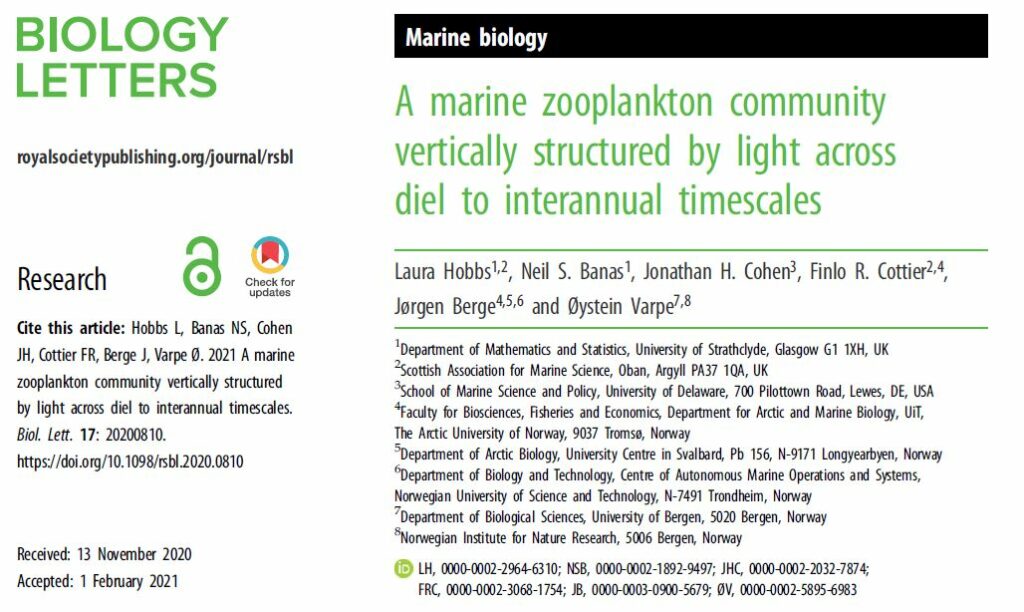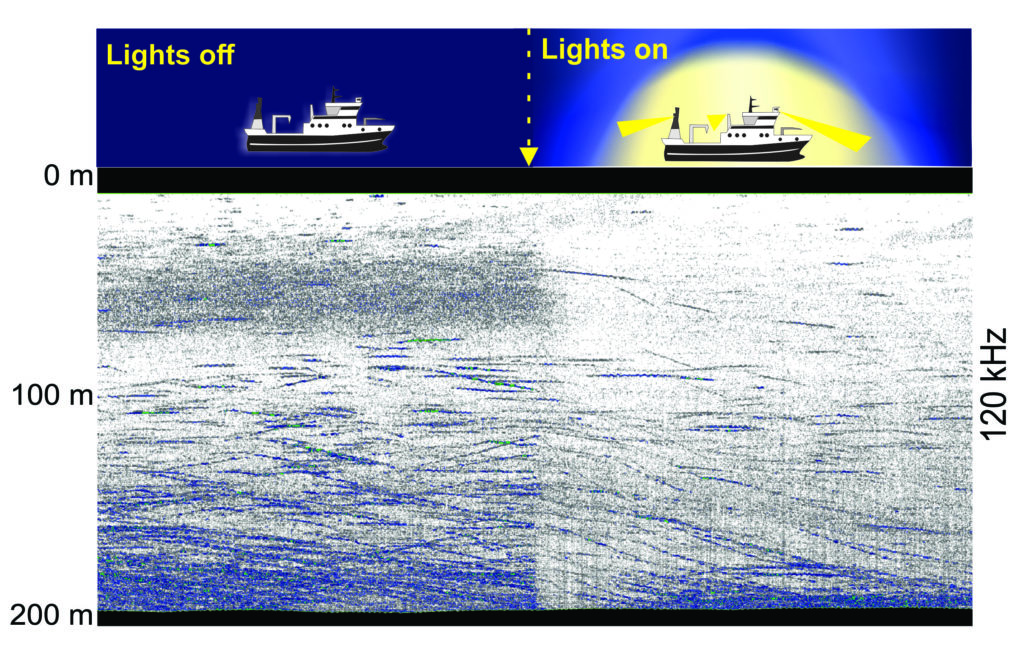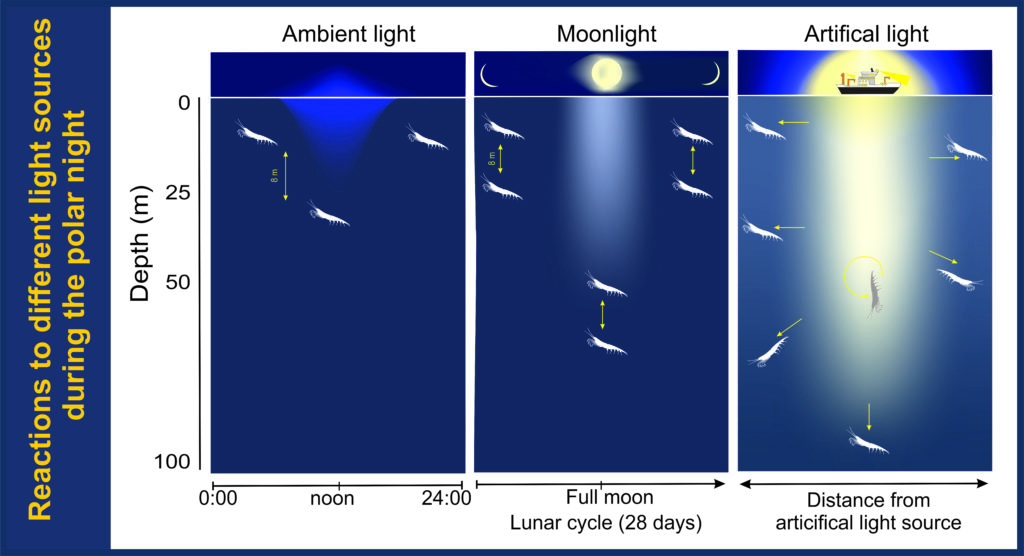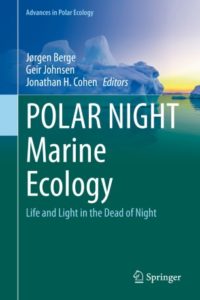DEEP IMPACT
The impact of artificial light on arctic pelagic ecosystems during the polar night
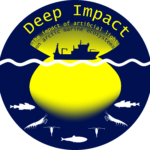
DEEP IMPACT is exploring the potential effects of artificial light on organisms that remain active in one of the last undisturbed and pristine dark habitats on the planet – the Arctic polar night.
Artificial illumination at night is increasing by 6% per year on average, thus becoming one of the fastest-spreading environmental challenges of the Anthropocene. Recent advances in the study of Arctic marine ecosystems have show that the poalr night is characterized by continuous activity and biological interactions across all trophic levels and taxonomic groups. Importantly, even at the darkest periods of the year, light is still the primary regulative factor.
The overarching hypothesis addressed in DEEP IMPACT is that in a system where organisms remain active and are adapted to detect and respond to extremely low levels of natural light during the polar night, their susceptibility towards light pollution is likely to be high.
With a continued warming and reduction of Arctic sea ice, human presence in the region is predicted to increase substantially. Inevitably, so will light pollution. This will have a direct impact on organisms and biological processes and also affect our capacity to understand these processes as surveys are routinely carried out using lit ships in the dark .
Deep Impact is a project funded by the Norwegian Research Council (project number 300333).
What is happening
Deep Impact ended in December 2024
Project summary:
Between 2020-2024, we conducted four polar night field campaigns using UiTs research vessel RV Helmer Hanssen as well as the infrastructure in Ny-Ålesund, Svalbard. In addition to the field campaigns, we developed a light field model, used existing data to model vertical migration behavior, conducted laboratory experiments to measure activity and light sensitivity, and designed a mesocosm for broadband acoustics calibrations. The project also utilized data from the ArcLight Observatory in Ny-Ålesund. In addition to the core Deep Impact group, we closely collaborated with other projects and partners to optimize use of resources (ship time, autonomous sampling platforms) and involved a larger number of students and early career researchers (ECR).
Overall, 34 peer reviewed articles and 18 datasets have been published, and Deep Impact partners have contributed to 6 book chapters.
24 presentation were given by Deep Impact partners presenting scientific results at national and international scientific conferences and meetings.
Result from Deep Impact have demonstrated that observations from optical and acoustic instruments using light sources with broad spectral composition in the 400–700 nm wavelengths do not capture the real state of the ecosystem and that they cannot be used alone for reliable abundance estimates or behavioural studies. This result has broad applications for the development and use of scientific instruments in marine environments. As a direct response to DI observations, Norwegian research vessels have installed red lights on deck, and the overall awareness in the research community to the effects of lights from ships and instruments and the potential bias on observations has been raised.
The light field model developed during the project is unique as it operates uninterrupted throughout the full year, able to calculate light fields from the sun above AND below the horizon as well as light from the moon and will be valuable for future studies beyond light pollution.
Deep Impact has demonstrated that marine animals are sensitive to very low light levels, far below what is currently measurable using commercially produced underwater light detectors. We have also demonstrated that the spectral distribution of light is critically important in determining animal responses. A key finding of the project is the outstanding need for development of higher sensitivity, spectrally resolved light sensors to measure underwater light fields for both ambient and artificially enhanced light regimes.
Furthermore, we have established that the light field produced by a research vessel is very heterogeneous, with extreme variations in light penetration in different directions. This poses a further measurement challenge that we expect will require development of remotely operated or autonomous platforms equipped with the highest sensitivity detectors and able to accurately position themselves in 3D relative to the position of a target vessel. The combination of extreme dynamic range, spectral response and positioning / directionality of the light field is a major challenge for which the consortium is continuing to develop new tools.
The mesocosm experiments for broadband target strength spectra measurements has advance our understanding of the potential for acoustic spectral-based species discrimination. This is an important step forward to discriminate between acoustic signals of different taxa, a subject of wide interest within fisheries research and management.
Key publications:
Using acoustic records, Hobbs et al. show that zooplankton in an Arctic fjord position themselves vertically in relation to light. A depth-varying line of constant light intensity (isolume) bascially forms a ceiling above which zooplankton won’t venture.The value of this isolume is set at the lower limit of photobehaviour reponses of Calanus spp. and krill. These results suggest that zooplankton follow a foraging strategy that will keep visual predation risk roughly constant under changing light conditions. Thus they already have a strategy to cope with climate induced changes in the under water light climate, such as those caused by the reduction of sea ice.

Virtual kick-off meeting 6 October
Deep Impact started officially in July 2020. As we were not able to travel and meet in person this autumn we had a virtual kick-off meeting.
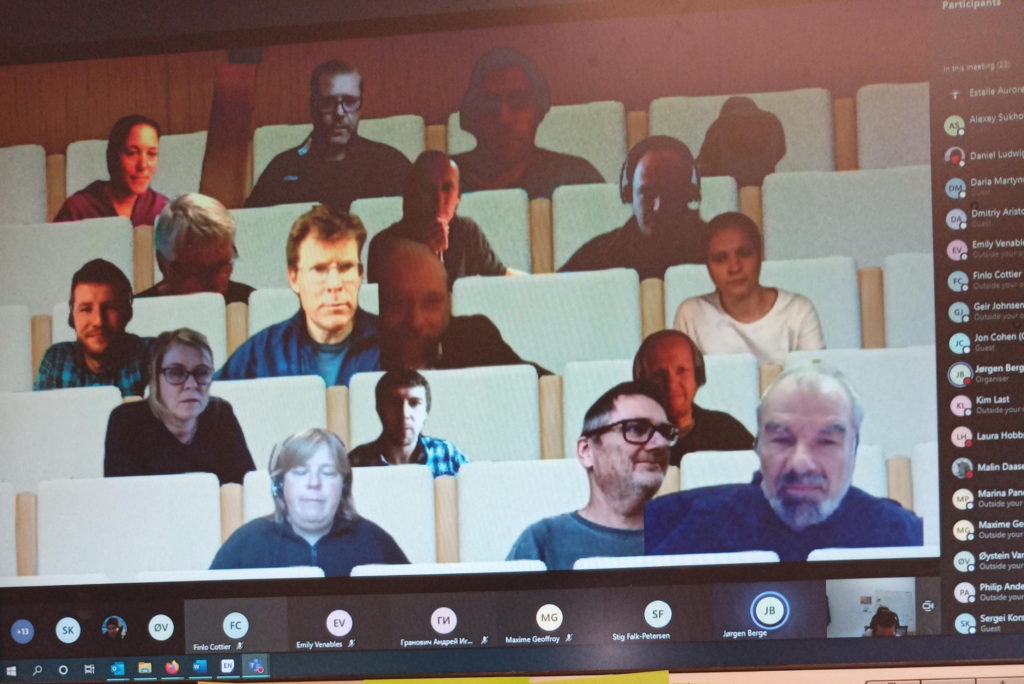
Learn more
Deep Impact is building on numerous observations made during polar night campaigns over the past decade. Have a look at these publications to learn more about polar night and the importance of light even during the darkest part of the year
Artificial light during the polar night disrupts Arctic fish and zooplankton behaviour down to 200 m depth
Berge et al 2020 showed that normal working-light from a ship may disrupt fish and zooplankton behaviour down to at least 200m depth across an area of >0.125 km2 around the ship. Our study concludes that biological surveys in the dark from illuminated ships may introduce biases on biological sampling, bioacoustic surveys, and possibly stock assessments of commercial and non-commercial species.
Use of an autonomous surface vehicle reveals small-scale diel vertical migrations of zooplankton and susceptibility to light pollution under low solar irradiance
Ludvigsen et al. 2018 used an Autonomous Surface Vehicle fitted with a hyperspectral irradiance sensor and an acoustic profiler to detected and quantified the behavior of zooplankton in an unpolluted light environment in the high Arctic polar night and compared the results with that from a light-polluted environment close to our research vessels.
Polar Night Marine Ecology – Life and light in the dead of the night
Interested in more polar night ecology? Check out “Polar Night Marine Ecology – Life and light in the dead of the night” published by Springer in Advances in Polar Ecology
Other publications and articles:
- Into the dark – an article by Finlo Cottier in Oceanographic
- Summary of our polar night work by National Geographics
